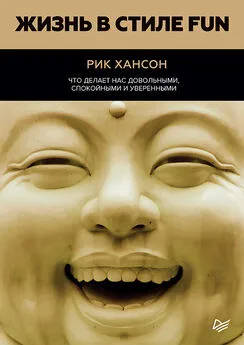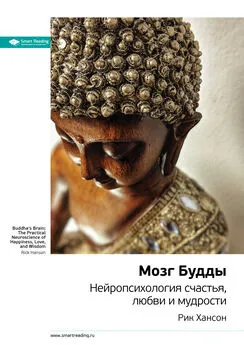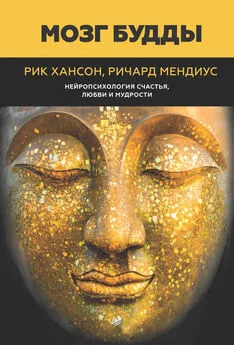Рик Хансон - Жизнь в стиле Fun. Что делает нас довольными, спокойными и уверенными
- Название:Жизнь в стиле Fun. Что делает нас довольными, спокойными и уверенными
- Автор:
- Жанр:
- Издательство:Питер
- Год:2019
- Город:Санкт-Петербург
- ISBN:978-5-4461-0840-4
- Рейтинг:
- Избранное:Добавить в избранное
-
Отзывы:
-
Ваша оценка:
Рик Хансон - Жизнь в стиле Fun. Что делает нас довольными, спокойными и уверенными краткое содержание
«Книга посвящена одному простому явлению: скрытой силе повседневных позитивных ощущений. Силе, способной перевоспитать мозг и таким образом изменить жизнь к лучшему. Я покажу вам, как превратить активное переживание приятных мгновений в вашу сильную сторону, достичь уверенности, свободы, комфорта, самоуважения и начать заботиться о себе. Речь не о тех моментах, когда вы чувствуете себя на миллион долларов. Я говорю о простых радостях жизни: ощущении уюта от любимого свитера, удовольствии от чашки кофе, теплоте общения с другом, удовлетворении от выполненного задания или любви вашего спутника.
Вы научитесь практике принятия хорошего. Если посвящать ей по десять секунд несколько раз в день, это укрепит состояние радости, спокойствия и внутренней силы. Наука, лежащая в основе этой практики, не относится к позитивному мышлению. И это не очередная программа по созданию позитивных чувств. То и другое не приносит пользы вашему мозгу. В нашей книге речь пойдет о трансформации мимолетного опыта в устойчивые положительные изменения вашей нейронной сети». — Рик Хансон.
«Жизнь в стиле Fun» учит нас избавляться от привычки видеть в первую очередь негатив, которая появилась в ходе эволюции. Она помогает наслаждаться позитивными вещами. Сделайте себе и своим близким лучший подарок: подарите эффективную стратегию по усилению радости с помощью практик, связанных с мозгом, одновременно простых и приятных.
Жизнь в стиле Fun. Что делает нас довольными, спокойными и уверенными - читать онлайн бесплатно ознакомительный отрывок
Интервал:
Закладка:
134
Esch, Stefano. The Neurobiology of Stress Management.
135
Elizabeth Broadbent et al. A Brief Relaxation Intervention Reduces Stress and Improves Surgical Wound Healing Response: A Randomished Trial // Brain, Behavior, & Immunity. 2012. 26 (2). P. 212–217; Герберт Бенсон. Чудо релаксации. М.: АСТ, 2004.
136
Герберт Бенсон. Чудо релаксации.
137
Brian Rees. Overview of Outcome Data of Potential Mediation Training for Soldier Resilience // Military Medicine. 2011. 176 (11). P. 1232–1242; Dusek et al. Genomic Counter-Stress; Mary Karapetian Alvord, Judy Johnson Grados. Enhancing Resilence in Children: A Proactive Approach // Professional Psychology: Research and Practice. 2005. 36 (3). P. 238–245.
138
Герберт Бенсон. Чудо релаксации.
139
Kent C. Berridge et al. The Tempted Brain Eats: Pleasure and Desire Circuits in Obesity and Eating Disorders // ScienceDirect. 2010. 1350. P. 43–64; Berridge. Wanting and Liking: Observations from the Neuroscience and Psychology Laboratory // Inquiry. 2009. 52 (4). P. 378–398; S. Pecina, Berridge. Hedonic Hot Spot in Nucleus Accumbens Shell: Where Do Mu-Opioids Cause Increased Impact of Sweetness? // Journal of Neuroscience. 2005. 25 (50). P. 11777–11786; Berridge. Food Reward: Brain Substrates of Wanting and Liking // Neuroscience Biobehavioral Review. 1996. 20 (1). P. 1–25.
140
Tugade, Federickson. Regulation of Positive Emotions.
141
Ylva Ostby et al. Mental Time Travel and Default-Mode Network Functional Connectivity in the Developing Brain // Proceedings of the National Academy of Sciences. 2012. 109 (42). P. 16800–16804.
142
Shelly L. Gable et al. What Do You Do When Things Go Right? The Intrapersonal and Interpersonal Benefits of Sharing Positive Events // Journal of Personality and Social Psychology. 2004. 87 (2). P. 228–245; Christopher A. Langston. Capitalizing On and Coping with Daily-Life Events: Expressive Responses to Positive Events // Journal of Personality and Social Psychology. 1994. 67. P. 1112–1125.
143
Jean Decety, Philip L. Jackson. The Functional Architecture of Human Empathy // Behavorial and Cognitive Neuroscience Reviews. 2004. 3. P. 71–100.
144
Susan Folkman, Judith Moskowitz. Positive Affect and the Other Side of Coping // American Psychologist. 2000. 55. P. 647–654.
145
Jorge Moll et al. Human FrontoMesolimbic Networks Guide Decisions About Charitable Donation // Proceedings of the National Academy of Sciences. 2006. 103. P. 15623–15628.
146
Eric Alden Smith. Communication and Collective Action: The Role of Language in Human Cooperation // Evolution and Human Behavior. 2010. 31 (4). P. 231–245; Martin A. Nowak, Karl Sigmund. Evolution of Indirect Reciprocity // Nature. 2005. 437. P. 1291–1298;
Ernst Fehr, Bettina Rockenbach. Human Altruism: Economic, Neural, and Evolutionary Perspectives // Current Opinion in Neurobiology. 2004. 14 (6). P. 784–790; Fehr. Human Behaviour: Don't Lose Your Reputation // Nature. 2004. 432. P. 449–450.
147
Schachter. Adaptive Constructive Processes and the Future of Memory // American Psychologist. 2012. 67 (8). P. 603–613.
148
Schachter. Adaptive Constructive Processes.
149
Спасибо Сэлли Клауф Армстронг за эту метафору.
150
Wulfram Gerstner et al. Theory and Simulation in Neuroscience // Science. 2012. 338. P. 60–65.
151
Panksepp. Affective Neuroscience.
152
Critchley, Nagai. How Emotions Are Shaped by Bodily States.
153
Tom F. Price et al. Embodying Approach Motivation: Body Posture Influences Startle Eyeblink and EventRelated Potential Responses to Appetitive Stimuli // Biological Psychology. 2012. 90. P. 211–217.
154
Price et al. The Emotive Neuroscience of Embodiment // Motivation and Emotion. 2012. 36 (1). P. 27–37; Paula Niedenthal. Embodying Emotion // Science. 2007. 316. P. 1002–1005.
155
Critchley, Nagai. How Emotions Are Shaped by Bodily States.
156
Seligman, Tracy A. Steen. Positive Psychotherapy Progress: Empirical Validation of Interventions // American Psychologist. 2005. 60 (5). P. 410–421.
157
Gerstner et al. Theory and Simulation in Neuroscience.
158
Gretchen Vogel. Can We Make Our Brains More Plastic? // Science. 2012. 338. P. 36–39.
159
Schachter. Adaptive Constructive Processes; Karim Nader. Memory Traces Unbound // Trends in Neurosciences. 2003. 26 (2). P. 65–70; Nader et al. The Labile Nature of Consolidation Theory // Nature. 2000. 1 (3). P. 216–219.
160
Evan Thompson. Mind in Life: Biology, Phenomenology, and the Sciences of Mind. Cambridge, Mass.: Harvard University Press, 2007.
161
Nader et al. The Labile Nature of Consolidation Theory.
162
Nader. Memory Traces Unbound.
163
Mark E. Bouton. Context and Behavioral Processes in Extinction // Learning & Memory. 2004. 11. P. 485–494.
164
Pizzorusso Tommaso. Erasing Fear Memories // Science. 2009. 325. P. 1214–1215.
165
Toomey, Ecker. Competing Vision; Ecker, Toomey. Depotentiation of Symptom-Producing.
166
Точная продолжительность промежутка реконсолидации неизвестна, но она не превышает шести часов.
167
Yan-Xue Xue et al. A Memory Retrieval-Extinction Procedure to Prevent Drug Craving and Relapse // Science. 2012. 336. P. 241–245; Amy L. Milton, Barry J. Everitt. Wiping Drug Memories // Science. 2012. 336. P. 167–168; Daniela Schiller et al. Preventing the Return of Fear in Humans Using Reconcolidation Update Mechanisms // Nature. 2010. 463. P. 49–53; Marie-H. Monfils et al. Extinction-Reconsolidation Boundaries: Key to Persistent Attenuation of Fear Memories // Science. 2009. 324. P. 951–955.
168
Thomas Agren et al. Disruption of Reconsolidation Erases a Fear Memory Trace in the Human Amygdala // Science. 2012. 337. P. 1550–1552.
169
Toomey, Ecker. Competing Visions; Ecker, Toomey. Depotentiation of Symptom Producing.
170
Келли Макгонигал. Сила воли. Как развить и укрепить. М.: Манн, Иванов и Фербер, 2012.
171
Cornelia Kegel et al. Differential Susceptibility in Early Literacy Instruction Through Computer Games: The Role of the Dopamine D4 Receptor Gene (DRD4) // Mind, Brain, and Education. 5. P. 71–78.
172
Schachter. Adaptive Constructive Processes; G. Elliott Wimmer, Dapha Shohamy. Preference by Association: How Memory Mechanisms in the Hippocampus Bias Decisions // Science. 2012. 338. P. 270–273.
173
Кроме того, если вы страдаете биполярным расстройством, будьте осторожнее с интенсивными и продолжительными позитивными эмоциями. Они могут спровоцировать маниакальный приступ. См.: June Gruber. Can Feeling Too Good Be Bad? Positive Emotion Persistence (PEP) in Bipolar Disorder // Current Directions in Psychological Science. 2001. 20 (4). P. 217–221.
174
Judith Herman. Trauma and Recovery: The Aftermath of Violence — from Domestic Abuse to Political Terror. New York: Basic Books, 1997.
175
Peter A. Levine. In an Unspoken Voice: How the Body Releases Trauma and Restores Goodness. Berkeley: North Atlantic Books, 2010.
176
Pat Ogden. Trauma and the Body: A Sensorimotor Approach to Psychotherapy. New York: W. W. Norton & Company, 2006.
177
Bessel A. van der Kolk. Traumatic Stress: The Effects of Overwhelming Experience on Mind, Body, and Society. New York: The Guilford Press, 2006.
178
Kegel et al. Differential Susceptibility in Early Literacy.
179
Bryant et al. Understanding the Processes that Regulate Positive Emotional Experience.
180
Feldman et al. Responses to Positive Affect; Joanne V. Wood et al. Savoring Versus Dampening: Self-Esteem Differences in Regulating Positive Affect // Journal of Personality and Social Psychology. 2003. 85. P. 566–580.
181
Bryant, Veroff. Savoring.
182
Если в ваших отношениях партнер проявлял жестокость или была такая угроза, будьте осторожнее и обратитесь за помощью к профессионалу перед тем, как выполнять практику.
183
Schachter. Adaptive Constructive Processes.
184
Paul Gilbert. The Compassionate Mind: A New Approach to Life's Challenges. Oakland, Calif.: New Harbinger Publications, Inc., 2010.
185
Hamann et al. Ecstasy and Agony; Sergio Paradiso. Cerebral Blood Flow Changes Associated with Attribution of Emotional Valence to Pleasant, Unpleasant, and Neutral Visual Stimuli in a PET Study of Normal Subjects // American Journal of Psychiatry. 1999. 156 (10). P. 1618–1629.
186
Teresa M. Leyro. Distress Tolerance and Psychopathological Symptoms and Disorders: A Review of the Empirical Literature among Adults // Psychological Bulletin. 2010. 136 (4). P. 576–600.
187
Critchley. Neural Mechanisms.
188
Critchley, Nagai. How Emotions Are Shaped by Bodily States; Porges. The Polyvagal Theory.
189
См. прекрасную книгу: Thich Nhat Hanh. Being Peace. Berkeley: Parallax Press, 2005.
190
Panksepp. Affective Consciousness.
191
Интервал:
Закладка:



![Джейн Мэтьюз - Жизнь в стиле соло: как жить одному и наслаждаться этим [litres]](/books/1073568/dzhejn-metyuz-zhizn-v-stile-solo-kak-zhit-odnomu-i.webp)






